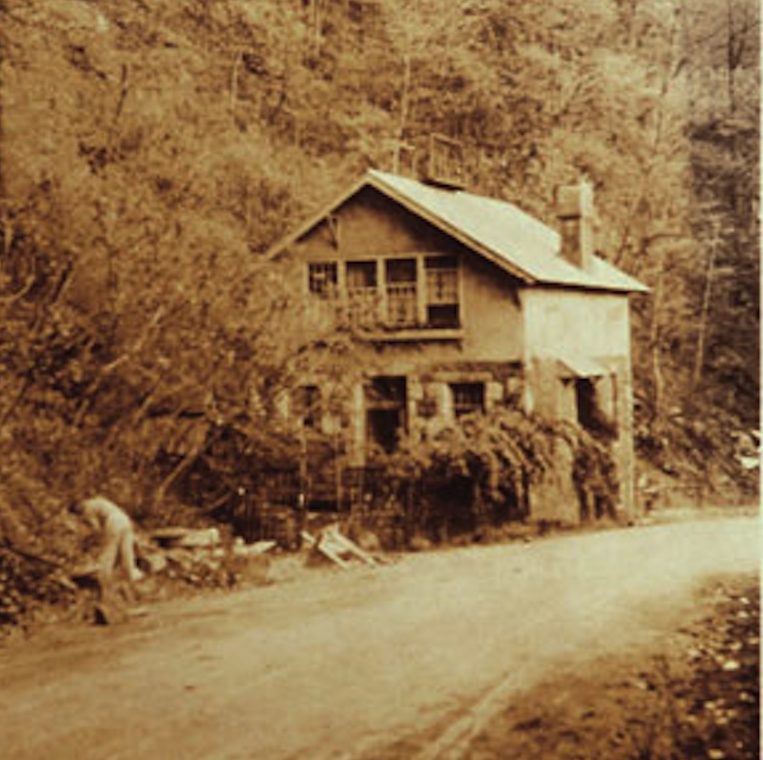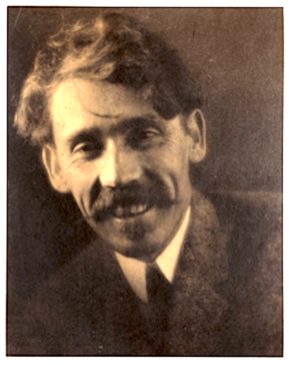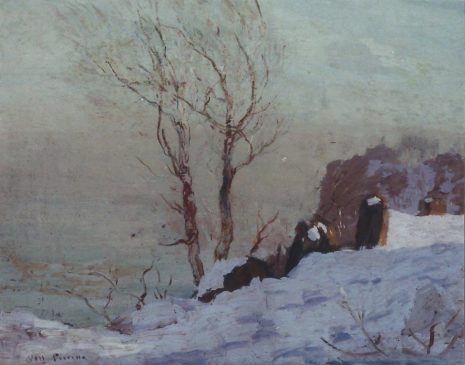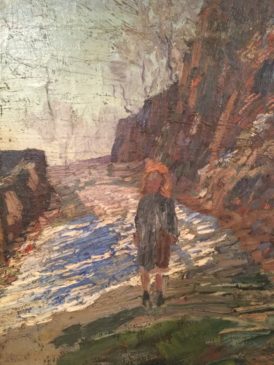
BY KRISTIN BEUSCHER
OF NORTHERN VALLEY PRESS
ENGLEWOOD CLIFFS, N.J. —— The Undercliff School was a little schoolhouse constructed on the Palisades in the 19th century for the use of fishermen’s children living along the waterfront.
[slideshow_deploy id=’899′]
At the turn of the 20th century, as the Palisades Interstate Park was coming into its own as a recreational area for the people of New York and New Jersey, the once-time thriving Undercliff Colony, in turn, dwindled before finally disappearing. The little schoolhouse was sitting abandoned, having been closed in 1894 due to a decline in enrollment. Yet, there would be another chapter to its story—as a place where the natural landscape was committed to canvas.
An artist by the name of Van Dearing Perrine (1869-1955), who would come to be known as the “Painter of the Palisades,” moved to the foot of the cliffs in 1902, drawing immense inspiration from the natural landscape. The Palisades Interstate Park Commission agreed to let Perrine lease the old schoolhouse.


“He lovingly fixed it up, made it his winter home-cum-studio,” according to a 2009 article published in the Commission’s newsletter, “Cliff Notes.” “He sketched the local people, the trees. The cliffs … Theodore Roosevelt, who had ridden and hunted along the tall cliffs as a youth and had been their champion while governor of New York, purchased one of Perrine’s paintings of the Palisades to have it hung in the White House.
“He’d spend the warm months of the year elsewhere, Long Island was a favorite, someplace he could plant a garden. He’d return to his schoolhouse on the Palisades after the leaves had fallen, so that his painter’s eye could probe the raw contours of the rock faces.”
In a 1906 article, Century Illustrated magazine wrote of Perrine, “He lives with his subject [the cliffs] close to the ground in an abandoned schoolhouse, and paints in a cabin with a vertical wall at the door and a vertical drop under the window. He knows his Palisades as Thoreau knew his Walden.”
Perrine reportedly wrote to a friend, speaking of the cliffs, “Their bigness—immensity—ruggedness appealed to something in my own nature. I tried to use the cliffs as symbols of the vast stubborn struggle of life, the immense grind, the immense upheaval, the eternal and silent combat that is typified by these crags that have pitted themselves against the elements and wrestled with the glaciers.”
In November of 1908, the artist returned to the Palisades and was heartbroken to discover that the little schoolhouse had burned down that very morning.
“Through much of 1909, then, the year of the park’s dedication, the ‘Painter of the Palisades’ would be working anxiously with the Commission to draw up plans to rebuild the schoolhouse,” according to the article in Cliff Notes.
Perrine’s studio was rebuilt in 1909. Two years later, he married a woman named Theodora Snow. Along with their son and daughter, the couple returned to the Palisades every winter through 1923. Some years later, the rebuilt studio was taken down.
